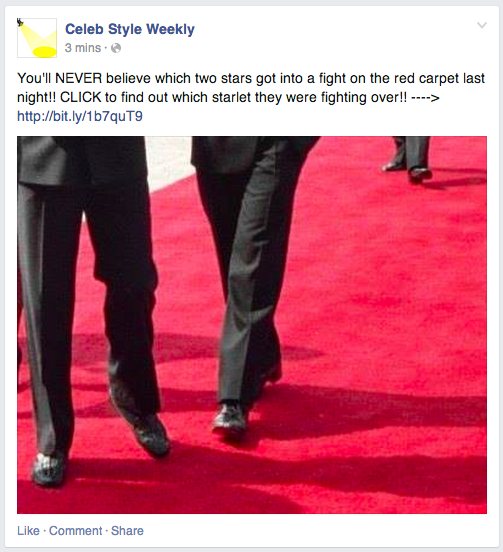Facebook users will no longer have to wonder about “what happens next” with a major change Facebook has made regarding click baiting posts made to Facebook pages.
The “you won’t believe what happens next” type of headlines and teasers became popular – and highly visible – when Upworthy began utilizing the technique for their feel good stories they became famous for. But as more companies utilized the technique, users began hating them. And many times, the supposed content being teased about wasn’t even delivered on the page the story linked to.
But if you were curious about how Facebook is determining it, it isn’t based upon user interaction and engagement. They are actually tracking how much time you spend on the site of a link you clicked, to determine how valuable it is.
One way is to look at how long people spend reading an article away from Facebook. If people click on an article and spend time reading it, it suggests they clicked through to something valuable. If they click through to a link and then come straight back to Facebook, it suggests that they didn’t find something that they wanted. With this update we will start taking into account whether people tend to spend time away from Facebook after clicking a link, or whether they tend to come straight back to News Feed when we rank stories with links in them.
Obviously, this kind of measurement is open to interpretation and doesn’t necessarily make a particular Page’s post clickbait. For example, clicking a link to view a 6 second Vine-esque video would have a user back in the Facebook news stream within 10 seconds. But does that in itself make it unworthy of being in your news feed? Not always, but Facebook might view it that way.
They are also using engagement as a method of testing this – namely how many people click through to a story, but don’t come back to like it or comment on it.
Another factor we will use to try and show fewer of these types of stories is to look at the ratio of people clicking on the content compared to people discussing and sharing it with their friends. If a lot of people click on the link, but relatively few people click Like, or comment on the story when they return to Facebook, this also suggests that people didn’t click through to something that was valuable to them.
Again, this is definitely open to interpretation. How many times have you gone to view your Facebook tab after reading a story, only to discover it is instantly updating your feed. You might have planned to share or comment on it, but unless you remember who shared it or where it originated from, you might not see it in your feed again.
Facebook does confirm that any publisher utilizing click bait will see their organic exposure reduced over the next few months.
This is another step Facebook has made in their quest to “clean up” user’s news feeds, but what many brands are complaining is simply Facebook reducing Page’s organic exposure so they are forced to pay for the exposure via Facebook ads instead.
Jennifer Slegg
Latest posts by Jennifer Slegg (see all)
- 2022 Update for Google Quality Rater Guidelines – Big YMYL Updates - August 1, 2022
- Google Quality Rater Guidelines: The Low Quality 2021 Update - October 19, 2021
- Rethinking Affiliate Sites With Google’s Product Review Update - April 23, 2021
- New Google Quality Rater Guidelines, Update Adds Emphasis on Needs Met - October 16, 2020
- Google Updates Experiment Statistics for Quality Raters - October 6, 2020
